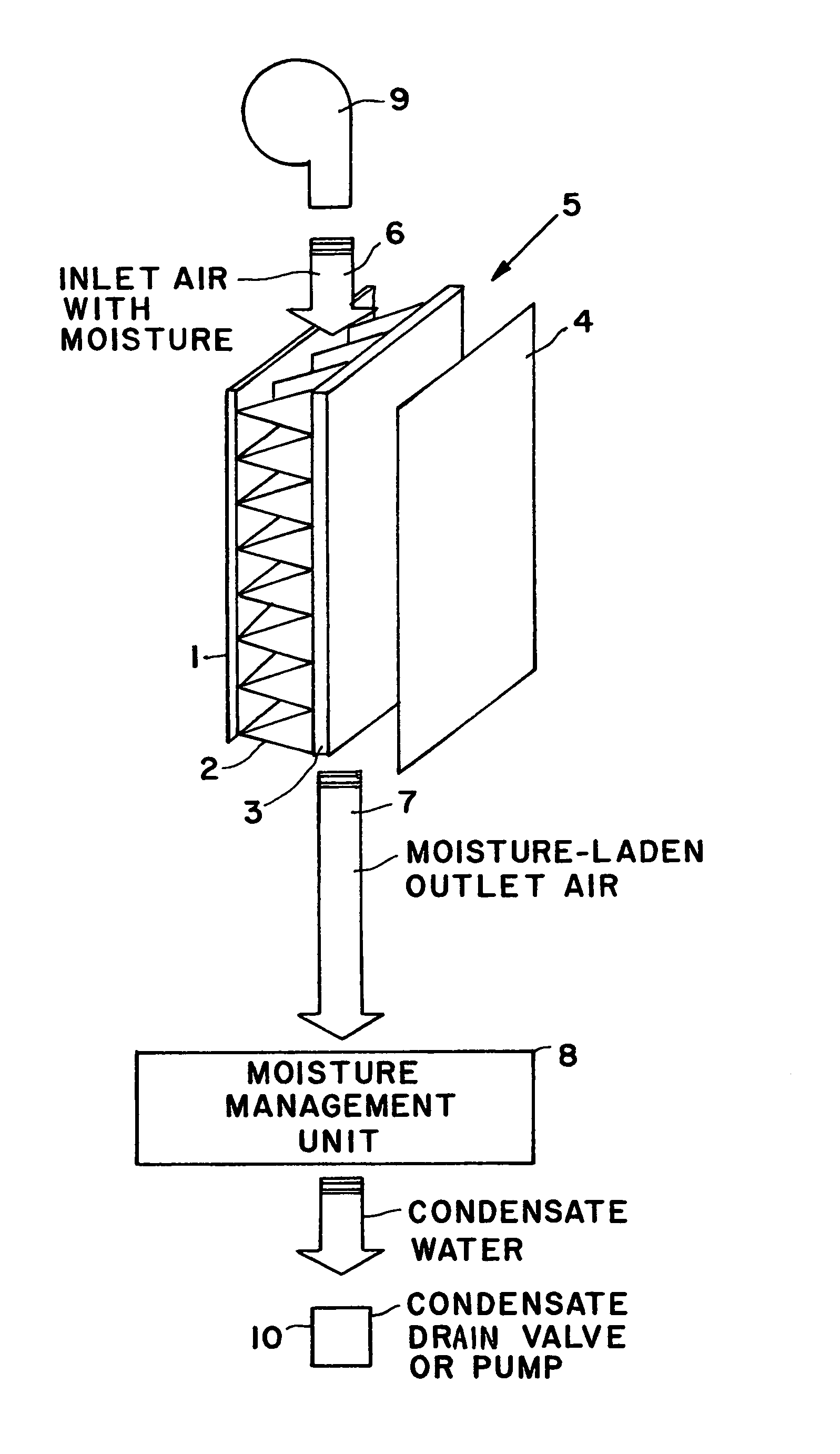Ventilated double-walled composite aircraft fuselage shell
a composite aircraft and fuselage shell technology, applied in envelope/bag making machinery, paper/cardboard containers, other domestic articles, etc., can solve the problems of unsuitable conventional composite structural components for use in the primary fuselage shell, the accumulation of condensate moisture, and the undesirable moisture uptake of known double-walled composite structures in servi
- Summary
- Abstract
- Description
- Claims
- Application Information
AI Technical Summary
Benefits of technology
Problems solved by technology
Method used
Image
Examples
Embodiment Construction
[0010]As shown schematically in the single drawing FIGURE, the double-walled composite core structural component 5 according to the invention comprises two cover layers 1 and 3 consisting of fiber-reinforced composite synthetic material, for example. The cover layers 1 and 3 may alternatively consist of an aluminum alloy, or some other metal. One cover layer 1 forms the outer skin and the other cover layer 3 forms the inner skin of an aircraft fuselage shell. The inner cover layer 3 forming the inner skin of the aircraft fuselage shell carries the major loads, i.e. the majority of the total load to be carried by the fuselage shell during service. On the other hand, the outer cover layer 1 carries a relatively smaller proportion of the loads, e.g. of the active loads arising during operation. For schematic simplicity, the composite core structural component 5 is shown as substantially flat or planar, but in actual practice the composite structural component 5 may have a curved config...
PUM
| Property | Measurement | Unit |
|---|---|---|
| air permeable | aaaaa | aaaaa |
| folded cell structure | aaaaa | aaaaa |
| concave curvature | aaaaa | aaaaa |
Abstract
Description
Claims
Application Information
 Login to View More
Login to View More - R&D
- Intellectual Property
- Life Sciences
- Materials
- Tech Scout
- Unparalleled Data Quality
- Higher Quality Content
- 60% Fewer Hallucinations
Browse by: Latest US Patents, China's latest patents, Technical Efficacy Thesaurus, Application Domain, Technology Topic, Popular Technical Reports.
© 2025 PatSnap. All rights reserved.Legal|Privacy policy|Modern Slavery Act Transparency Statement|Sitemap|About US| Contact US: help@patsnap.com


